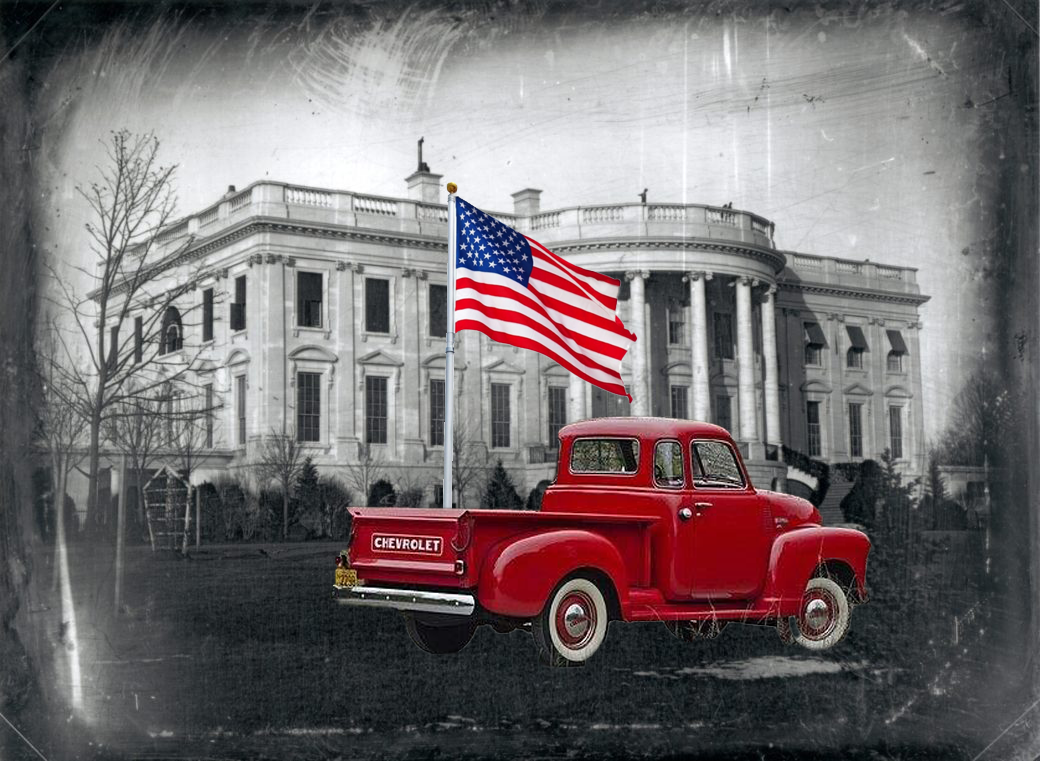
This past summer, I spent many hours in front of the TV cheering on Olympians competing in Tokyo. While there were many standout moments – Simone Biles’ stand for mental health, Allyson Felix’s final gold-winning race – the most meaningful moment for me was how I felt watching the American flag bearers march into the arena. It was a rare glimmer of patriotism.
For the past five years or so, this feeling has been absent. In fact, I’d say the waving of an American flag often evoked a sense of disgust and embarrassment– sometimes even fear if it happened to be flapping on the back of a large pickup truck. Despite its outward purpose of representing an entire country, the flag, in my mind, has come to embody conservative ideals.
The far right's agenda to lay claim to the American flag has never been a secret. Nationalist sentiment, particularly in the racist form of white nationalism, has been a hallmark of the radical right for years, giving rise to greater identification with and brandishing of national symbols like the flag. From replacing Biblical figures with “Old Glory” in public speeches to castigating NFL players kneeling during the national anthem, many conservatives have cast the American flag as a sacrosanct symbol that’s fallen victim to liberal abuse. And if these actions weren’t enough, former president Trump’s attempt to convince the other branches of government to criminalize flag burning – as well as his televised embrace of the American flag as he mouthed “I love you, baby” to the striped cloth – make the point pretty hard to miss.
Data shows this association is not imagined. One research study from 2011 used a questionnaire to ask participants about their political leanings and voting intentions, with half of the questionnaires including a small picture of the American flag on the top left hand corner. Interestingly, just that one brief exposure to the image of the flag resulted in participants rating themselves more likely to vote Republican, specifically for then-presidential nominee John McCain over the incumbent Barack Obama. Although there aren’t more recent studies on this connection between the flag and Republicanism, it would seem it’s only grown stronger over the past decade.
It’s not that leading Democrats have cast off the flag. Tiny American flags can be spotted on suit jackets of Democrats and Republicans alike, and the Stars and Stripes are often used as background for televised announcements of both parties. Yet the Democrats, unlike the far right, have not actively launched a campaign to claim the flag. Perhaps they didn’t even know the flag was up for grabs. This, it would seem, has cost them. After all, if you can only feel “American” by voting red, the Republican Party just gained a lot of members.
Compare photos of pro-Trump protests to anti-Trump protests and you’ll find a remarkable difference in what flags each gathering elects to display. The former is likely full of legions brandishing the Stars and Stripes, interspersed with sizable blue or red Trump flags; the latter, on the other hand, is typically populated with Pride flags, Black Lives Matter flags, even the occasional national flag of another country. These other flags are important in their own right, obviously, and should certainly be displayed. Their presence also reminds us that the American flag has historically not been understood as wholly inclusive for many different demographic groups across the country, prompting other banners to fill in the gaps. For Indigenous peoples, the American flag might serve as a reminder of the brutal colonization practices this country was built on. For Black Americans and other racial minorities, the institutional inequalities and pervasive violence perpetuated by the U.S. quite obviously tarnish the nation’s purported values of liberty and equality. As a symbol of this country, in other words, the flag inevitably also carries the baggage of this nation’s many injustices. However, two things can be true at once, and many Americans have found ways to acknowledge these hard truths while also embracing the flag as a sign of optimism and unification. An individual’s relationship to the flag is undeniably complex, but the campaign by the far right to further devalue the flag into white supremacist ideals only serves to add to the confusion and exclusion.
The solution? It is not for Democrats to launch their own campaign to claim the flag – a one-way ticket to irreversibly adding it to coronavirus and climate change as a Non-Partisan-Issue-That-Has-Somehow-Become-Partisan-Issue. Rather, it’s up to the people – the far left, far right, and everyone in between – to embrace the flag for what it is: a national symbol, baggage and all. The Olympics offer hope that the flag can be used to bring us together as a nation and inspire promise and pride across aisles. Let us keep that hope alive and save the Stars and Stripes from the rapacious partisan divide.